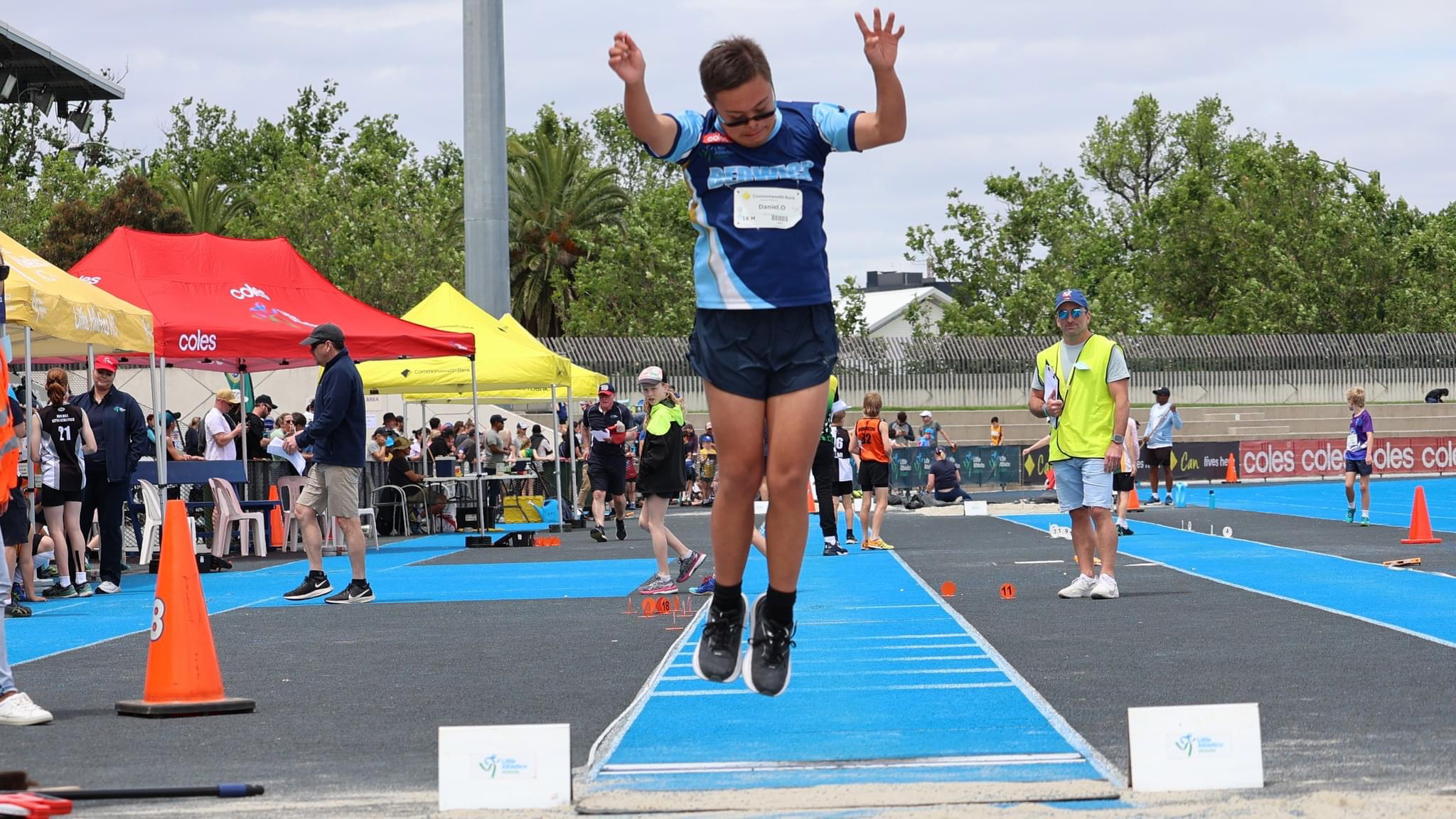Long Jump

Long Jump Skills
Technique
- Start at the run up position.
- Run up length is approximately the athletes age in steps.
- Body position.
- Run tall on balls of feet.
- Action – Run up.
- Build up speed – fast steps just before take off.
- Action – Take off.
- When reach board or mat, take off from one foo.t
- Push through calf, thigh and hip.
- Action – Flight.
- Stay tall with “proud chest” and head upright.
- Arms up.
- Legs up.
- Action – Land.
- Land with feet together.
- Body weight goes forward (over feet).
- Hands forward.
- Exit forward out of the pit.
Modification Options
- Use a wider mat with thin layer of sand on top.
- Place mat closer to the pit (well within athletes jump range).
- Measure from where the athlete takes off from on the mat.
- Appropriate for athletes with shorter jump lengths.
- Athletes can use a wheelchair by doing wheel pushes in the long jump pattern.
- Find a space away from the pit on clear runway or track.
- Ensure there is no risk of the wheelchair ending up in the sand pit.
- Create a take-off mark e.g. line or cones.
- Athlete completes a short approach of 2 to 3 pushes.
- When reach mark, one strong push – single or double arm.
- Measure from take-off mark.
- Allow different jumping actions.
- Double leg jump no run up (standing jump).
- Start at the front of the mat or on the edge of the sandpit.
- Body position
- Feet shoulder width apart.
- Swing arms backward as knees and hips bend (squat position).
- Action – Take off
- Push off through both calves, thighs and hips.
- Swing arms forward while legs push straight.
- Action – Flight
- Stay tall with “proud chest” and head upright.
- Arms up.
- Legs up with feet launch in front (as far as possible without causing loss of balance).
- Action – Land
- Land with feet together.
- Body weight goes forward (over feet).
- Hands forward.
- Exit forward out of the pit.
- Single leg jump after a step or two (remove need for run up).
- Double leg jump with run up.
- Double leg jump no run up (standing jump).
- Use bright markers for the path to run in and take off area.
- For blind and low vision athletes, use a guide athlete. See the sensory page for more information.
Before you start
- Mark the edges of take-off board or mat with bright plastic markers or similar.
- Take off board or mat is flush with the ground and pegged in.
- Damp sand is raked and sufficiently soft to absorb landing impact.
Safety
- Runway is flat and clear of objects.
- No slip hazards on take-off board before each jump.
- If rakes, forks or shovels are placed on the ground, face prongs downwards. Do not leave them in or beside the landing pit.
- Rake and level the landing pit after each jump.
Measuring
- Spike from the nearest break in the sand to the take off point (toe print on the take off mat or front of take off board).
- When is the jump a foul?
- If the athlete touches the ground past the take-off line / mat.
- If the athlete walks back through the landing area after a completed jump.
Recording
- Record the distance to the nearest whole centimetre below the distance measured.





